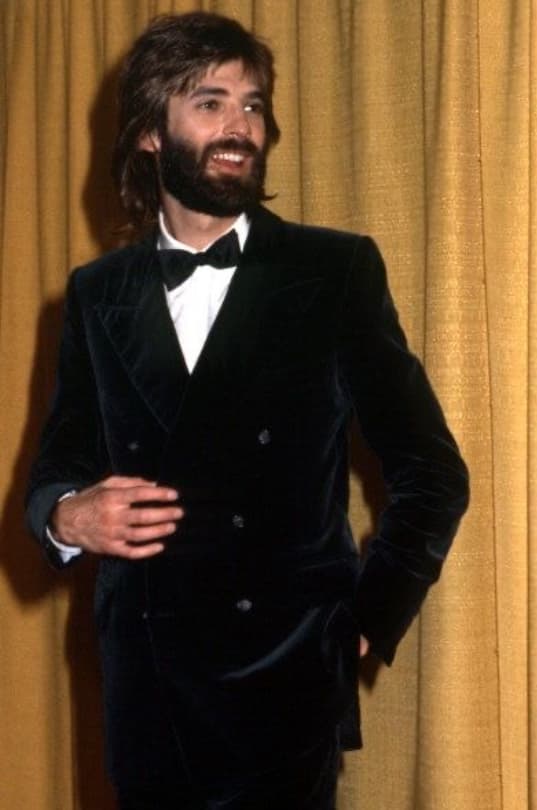
A Time Capsule of Pure Joy and Defiance: The Song That Unbanned Dancing
A jubilant call to embrace youthful abandon and defy restrictive old-world rules through the sheer power of music and dance.
Ah, 1984. A year that feels like a lifetime ago, yet remains vividly etched in the cultural memory, especially the soundtrack of our younger, wilder days. And at the heart of that unforgettable musical era stood the one, the only, Kenny Loggins, who earned his moniker as the “Soundtrack King” on the back of monumental hits like the one we’re reflecting on today: the endlessly kinetic, profoundly joyful anthem, “Footloose.”
Released in January 1984 as the lead single from the Footloose: Original Soundtrack of the Paramount Motion Picture album, this track didn’t just climb the charts—it exploded. “Footloose” became Kenny Loggins’ sole career chart-topper on the prestigious US Billboard Hot 100, holding the Number One spot for a triumphant three weeks, from March 31 to April 14, 1984. It was such a dominant presence that Billboard ranked it as the No. 4 song of 1984 for the entire year. It also became the first of two number-one hits to spring from the wildly successful soundtrack, with Deniece Williams’ “Let’s Hear It for the Boy” following its lead later that summer. The sheer magnitude of its success speaks volumes: this wasn’t just a hit song; it was a phenomenon, a cultural centerpiece of the mid-’80s that continues to resonate with energy and nostalgic warmth even today.
The True-Life Story Behind the Dance Floor Rebellion
The infectious beat of “Footloose” pulsates with a defiance that reflects the true story at the core of the film’s screenplay. Screenwriter and co-lyricist Dean Pitchford (who penned the lyrics to Loggins’ music for both “Footloose” and “I’m Free (Heaven Helps the Man)”) drew inspiration from an astonishing, real-life event. The fictional town of Bomont, where dancing is outlawed, was based on the small, deeply conservative farming town of Elmore City, Oklahoma.
In 1978, the junior class at Elmore City High School petitioned the local school board to overturn a decades-old ordinance that banned dancing—a law dating all the way back to 1898—so that they could hold a simple, traditional prom. The local minister argued vehemently against it, claiming that dancing would lead to “sexually aroused” teenagers and drinking, reflecting the old-guard mentality that sought to control the youthful spirit. The courageous students fought and ultimately won their battle, a genuine victory for teenage freedom against restrictive, outdated morality. This powerful narrative of youth finding its voice and fighting for the right to simple joy became the emotional bedrock for the film and, consequently, the song.
Meaning: Kicking Off Your Sunday Shoes
The song itself is a perfect encapsulation of its thematic inspiration. Far from being a politically charged anthem, the meaning of “Footloose” is wonderfully uncomplicated: it is a high-octane celebration of unrestricted, pure fun. The lyrics, with their calls to “cut loose,” “kick off your Sunday shoes,” and “lose your blues,” are an invitation to cast off the burdens of the week and the inhibitions imposed by authority. It’s about the primal, inherent need to move your body to music—to feel free.
For those of us who came of age in that decade, “Footloose” is more than just a party song. It is a time machine. The moment that iconic, driving synth and the staccato guitar riff kick in, we are instantly transported back to high school dances, roller rinks, and the sheer exhilaration of a Friday night with boundless possibilities. It embodies the essence of the 1980s pop-rock sound: full of synthesized urgency, bright melodies, and a relentless, optimistic beat. It captured the rebellious spirit of youth without the grimness often found in other rock genres, making it the perfect family-friendly battle cry for freedom. It reminds us that sometimes, the greatest act of rebellion is simply to dance and be joyful. This is a song that doesn’t just ask you to listen; it compels you to move, to remember the feeling of shedding your youthful anxieties on a brightly lit dance floor. It’s a testament to the enduring, universal truth that a great song can, quite literally, set you free.